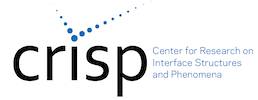Our kits are currently being reviewed and updated by a team of collaborative, innovative and interdisciplinary educators who wish to enhance the educational opportunities for students. These dedicated teachers are members of CRISP Collaborative Science for All (CCSA) as well as local educators.
Click to see the SCSU CRISP Module Template used by CCSA for improving and updating the CRISP demos and kits. Each kit page offers a CRISP developed teacher module and CRISP aligned standards (both NGSS and CCSS)
Kit Request form

Exploring Materials – Ferrofluid is a hands-on activity demonstrating that a material can act differently when it’s nanometer-sized. Visitors investigate the properties of Ferrofluid and magnetic black sand, learning that the surprising difference in the behavior of these two materials is due to size.
Adapted from NanoDays Toolkits originally created for NISEnet via the NanoDays project
This material is based upon work supported by the National Science Foundation Award Numbers 0532536 and 0940143. Any opinions, findings, and conclusions expressed in this material are those of the authors and do not necessarily reflect the views of the National Science Foundation.
Subject(s):
Magnetism, Properties at the Nanoscale, properties of materials
Objectives:
Students will understand that a material can act differently when it’s nanometer-sized.
Materials in this kit:
Ferrofluid display cell
Vial of magnetic black sand
Neodynium magnet
Dollar bill
Bill sized paper
2 giant binder clips (only the black base)
Ferrofluid Material Safety Data Sheet (MSDS)
Suggestions for the Teacher:
Safety:
Students should not ingest the chemicals.
Small fingers can be pinched by magnets! To minimize the pinch hazard, use caution when holding magnets near magnetic metals.
Before doing this activity, read the MSDS information on the ferrofluid display cell provided by the supplier.
Additional Resources:
NanoDays Ferrofluids website (Great resources!)
STEM Careers:
Materials Scientist
Nanoengineer
Researcher
Chemist
Chemical Engineer
Environmental Engineer
Mechanical Engineer
Physicist
Quantum Computing
Computer Scientists
Standards:
MS-PS1 - Matter and its interactions
MS-PS3 - Energy
HS-PS1 - Matter and its interactions
MS-PS3 - Energy
Concept 1 - Patterns
Concept 2 - Cause and effect. Mechanism and explanation
Practice 4 - Analyzing and Interpreting Data
Practice 8 - Obtaining, Evaluating, and Communicating Information
